The electric SUV segment is increasingly becoming competitive, with premium brands like BMW and Volvo pushing the envelope with innovative features and powerful electric drivetrains. In this article, we'll be comparing the BMW iX1 and the Volvo EX40, two exceptional vehicles that embody technological advancements and sustainability.
BMW iX1 vs Volvo EX40 – Which model is better for everyday use?
Two cars, one duel: BMW iX1 meets Volvo EX40.
Which one wins in performance, efficiency and value for money? Find out now!
Design and Dimensions
Both the BMW iX1 and Volvo EX40 present an eye-catching exterior characteristic of their respective brands. The iX1 measures 4500 mm in length, 1845 mm in width, and stands at a height of 1616 mm. Its bold and sporty design exudes the standard BMW aesthetic, with sharp lines and dynamic proportions.
On the other hand, the Volvo EX40 is slightly more compact, with dimensions of 4440 mm in length, 1863 mm in width, and a height of 1647 mm. The EX40 follows Volvo's design philosophy, featuring a sleek silhouette and signature vertical taillights that provide a robust yet elegant presence on the road.
Powertrain and Performance
When it comes to powertrains, the iX1 offers two configurations with outputs of 204 HP and 313 HP, available in both front-wheel and all-wheel-drive setups. It boasts a torque ranging from 250 Nm to an impressive 494 Nm, allowing the iX1 to accelerate from 0 to 100 km/h in as quickly as 5.6 seconds, depending on the model. Its electric range stands at a commendable 463 km, supported by a 64.8 kWh battery.
In comparison, the Volvo EX40 presents an even wider array of performance options, with power outputs varying from 238 HP to a whopping 408 HP. The highest performing variant can accelerate from 0 to 100 km/h in just 4.8 seconds and offers an electric range that can extend up to 576 km, powered by a 79 kWh battery. Torque is also superior in the EX40, peaking at 670 Nm.
Efficiency and Sustainability
Both vehicles are designed with sustainability in mind, achieving impressive energy consumption figures. The iX1's consumption ranges from 15.8 kWh/100km to 17.1 kWh/100km while the Volvo EX40 is slightly less efficient with its consumption ranging from 16.6 kWh/100km to 17.5 kWh/100km. Nevertheless, both models boast a CO2 efficiency class of A, contributing to their reputation as eco-friendly options.
Interior and Technology
Inside, the BMW iX1 is spacious, accommodating up to five passengers with a trunk capacity of 490 liters. It is equipped with advanced infotainment systems, featuring BMW's latest iDrive interface, connectivity options, and a wide range of driver-assistance features. The interior design prioritizes a premium feel with high-quality materials and an ergonomic layout.
The Volvo EX40 also seats five and offers a comfortable and versatile cargo space with a trunk capacity of 410 liters. Volvo's focus on minimalism is reflected within the cabin, featuring a clean layout complemented by a large touchscreen that controls most functions. The EX40 is also equipped with cutting-edge safety features, underlining Volvo's commitment to being a leader in automotive safety.
Conclusion
Choosing between the BMW iX1 and the Volvo EX40 ultimately depends on what you value most in an electric SUV. The iX1 offers exceptional performance and a dynamically sporty experience, while the EX40 provides a robust powertrain and sophisticated safety features. Both vehicles represent the future of sustainable luxury driving, ensuring that either choice is bound to satisfy the modern driver's demands.
Here’s where it gets real: The technical differences in detail
Costs and Efficiency:
Looking at overall running costs, both models reveal some interesting differences in everyday economy.
BMW iX1 has a minimal advantage in terms of price – it starts at 41800 £, while the Volvo EX40 costs 42800 £. That’s a price difference of around 1020 £.
In terms of energy consumption, the advantage goes to the BMW iX1: with 15.80 kWh per 100 km, it’s minimal more efficient than the Volvo EX40 with 16.60 kWh. That’s a difference of about 0.80 kWh.
As for range, the Volvo EX40 performs to a small extent better – achieving up to 576 km, about 113 km more than the BMW iX1.
Engine and Performance:
Power, torque and acceleration say a lot about how a car feels on the road. This is where you see which model delivers more driving dynamics.
When it comes to engine power, the Volvo EX40 has a evident edge – offering 442 HP compared to 313 HP. That’s roughly 129 HP more horsepower.
In acceleration from 0 to 100 km/h, the Volvo EX40 is evident quicker – completing the sprint in 4.60 s, while the BMW iX1 takes 5.60 s. That’s about 1 s faster.
There’s no difference in top speed – both reach 180 km/h.
There’s also a difference in torque: Volvo EX40 pulls distinct stronger with 670 Nm compared to 494 Nm. That’s about 176 Nm difference.
Space and Everyday Use:
Beyond pure performance, interior space and usability matter most in daily life. This is where you see which car is more practical and versatile.
Both vehicles offer seating for 5 people.
In curb weight, BMW iX1 is slight lighter – 1940 kg compared to 2040 kg. The difference is around 100 kg.
In terms of boot space, the BMW iX1 offers to a small extent more room – 490 L compared to 410 L. That’s a difference of about 80 L.
In maximum load capacity, the BMW iX1 performs minimal better – up to 1495 L, which is about 95 L more than the Volvo EX40.
When it comes to payload, BMW iX1 hardly perceptible takes the win – 495 kg compared to 480 kg. That’s a difference of about 15 kg.
Who wins the race?
The Volvo EX40 proves to be is largely superior and therefore becomes our DriveDuel Champion!
Volvo EX40 is the better all-rounder in this comparison.
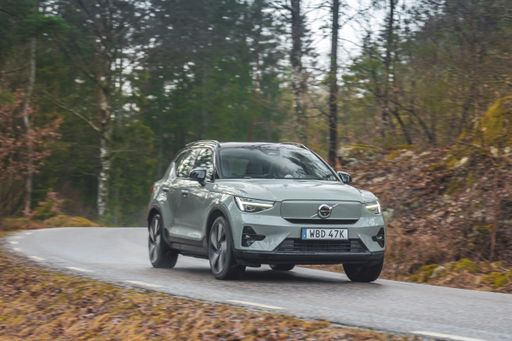 @ Volvo Cars
@ Volvo Cars
Volvo EX40
BMW iX1
The BMW iX1 wraps BMW's electric ambition into a compact SUV package that feels unexpectedly premium, with sharp handling and a crisp, modern cabin that keeps the driver in charge. It's ideal for buyers who want a stylish, quiet daily driver with useful practicality and tech-savvy touches — plus enough character to make the commute feel less like a chore and more like a short joyride.
details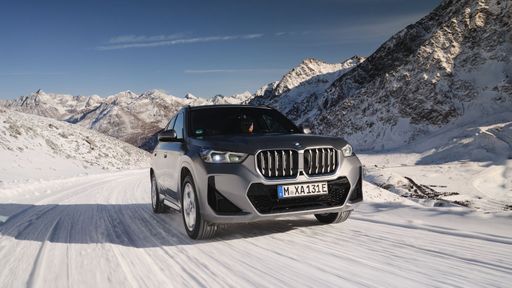 @ BMW Group Press
@ BMW Group Press
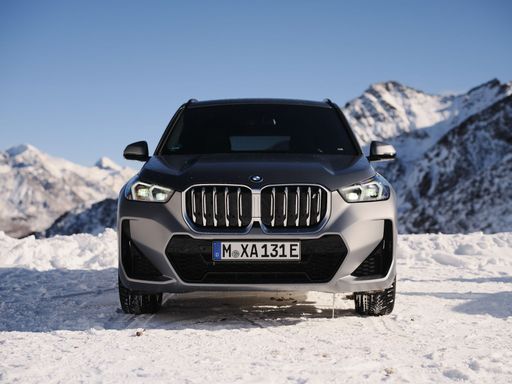 @ BMW Group Press
@ BMW Group Press
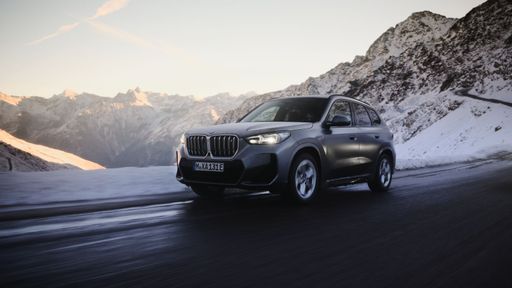 @ BMW Group Press
@ BMW Group Press
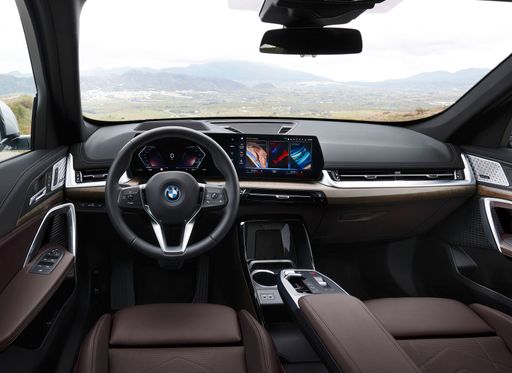 @ BMW Group Press
@ BMW Group Press
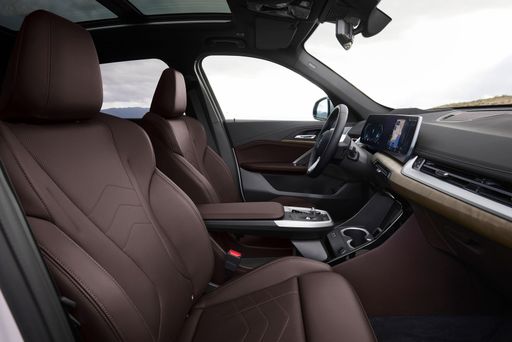 @ BMW Group Press
@ BMW Group Press
Volvo EX40
The Volvo EX40 wraps Scandinavian calm and clever practicality into a compact electric package that feels both premium and refreshingly uncomplicated. It's the grown-up answer to flashier rivals — a safe, comfy, and city-friendly EV with thoughtful tech that makes everyday driving quietly satisfying.
details @ Volvo Cars
@ Volvo Cars
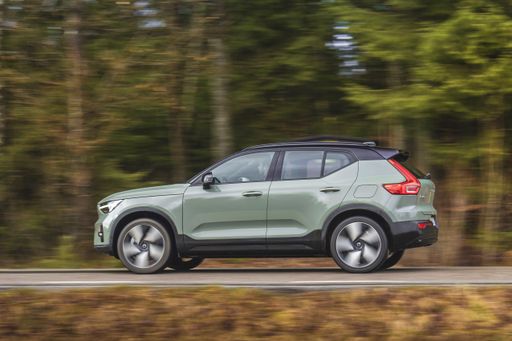 @ Volvo Cars
@ Volvo Cars
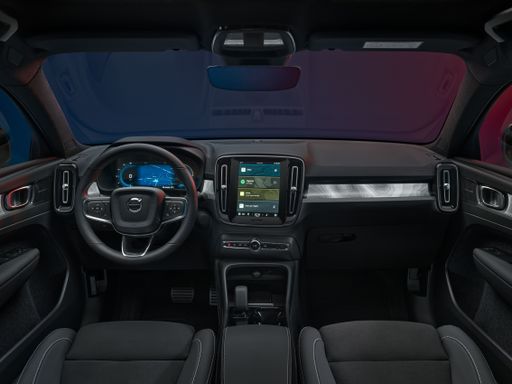 @ Volvo Cars
@ Volvo Cars
 @ BMW Group Press
@ BMW Group Press
|
 @ Volvo Cars
@ Volvo Cars
|
|
|
|
Costs and Consumption |
|
|---|---|
|
Price
41800 - 54600 £
|
Price
42800 - 58200 £
|
|
Consumption L/100km
-
|
Consumption L/100km
-
|
|
Consumption kWh/100km
15.8 - 17.1 kWh
|
Consumption kWh/100km
16.6 - 17.6 kWh
|
|
Electric Range
436 - 463 km
|
Electric Range
480 - 576 km
|
|
Battery Capacity
64.80 kWh
|
Battery Capacity
67 - 79 kWh
|
|
co2
0 g/km
|
co2
0 g/km
|
|
Fuel tank capacity
-
|
Fuel tank capacity
-
|
Dimensions and Body |
|
|---|---|
|
Body Type
SUV
|
Body Type
SUV
|
|
Seats
5
|
Seats
5
|
|
Doors
5
|
Doors
5
|
|
Curb weight
1940 - 2085 kg
|
Curb weight
2040 - 2170 kg
|
|
Trunk capacity
490 L
|
Trunk capacity
410 L
|
|
Length
4500 mm
|
Length
4440 mm
|
|
Width
1845 mm
|
Width
1863 mm
|
|
Height
1616 mm
|
Height
1647 mm
|
|
Max trunk capacity
1495 L
|
Max trunk capacity
1286 - 1400 L
|
|
Payload
495 kg
|
Payload
430 - 480 kg
|
Engine and Performance |
|
|---|---|
|
Engine Type
Electric
|
Engine Type
Electric
|
|
Transmission
Automatic
|
Transmission
Automatic
|
|
Transmission Detail
Reduction Gearbox
|
Transmission Detail
Reduction Gearbox
|
|
Drive Type
Front-Wheel Drive, All-Wheel Drive
|
Drive Type
Rear-Wheel Drive, All-Wheel Drive
|
|
Power HP
204 - 313 HP
|
Power HP
238 - 442 HP
|
|
Acceleration 0-100km/h
5.6 - 8.6 s
|
Acceleration 0-100km/h
4.6 - 7.3 s
|
|
Max Speed
170 - 180 km/h
|
Max Speed
180 km/h
|
|
Torque
250 - 494 Nm
|
Torque
420 - 670 Nm
|
|
Number of Cylinders
-
|
Number of Cylinders
-
|
|
Power kW
150 - 230 kW
|
Power kW
175 - 325 kW
|
|
Engine capacity
-
|
Engine capacity
-
|
General |
|
|---|---|
|
Model Year
2022 - 2023
|
Model Year
2024
|
|
CO2 Efficiency Class
A
|
CO2 Efficiency Class
A
|
|
Brand
BMW
|
Brand
Volvo
|
Is the BMW iX1 offered with different drivetrains?
The BMW iX1 is available as Front-Wheel Drive or All-Wheel Drive.
The prices and data displayed are estimates based on German list prices and may vary by country. This information is not legally binding.
